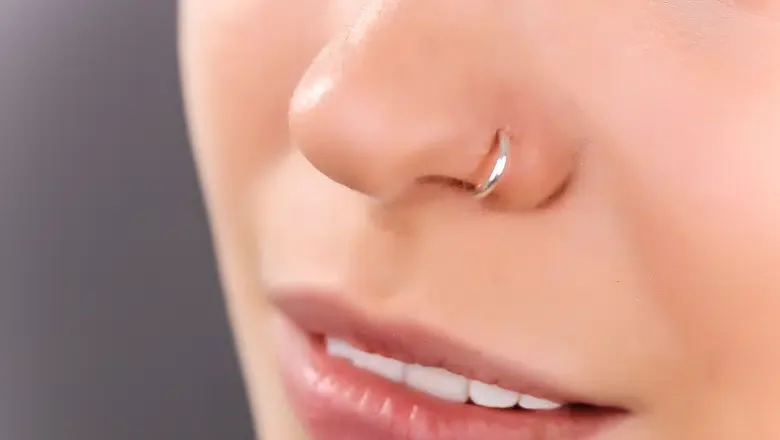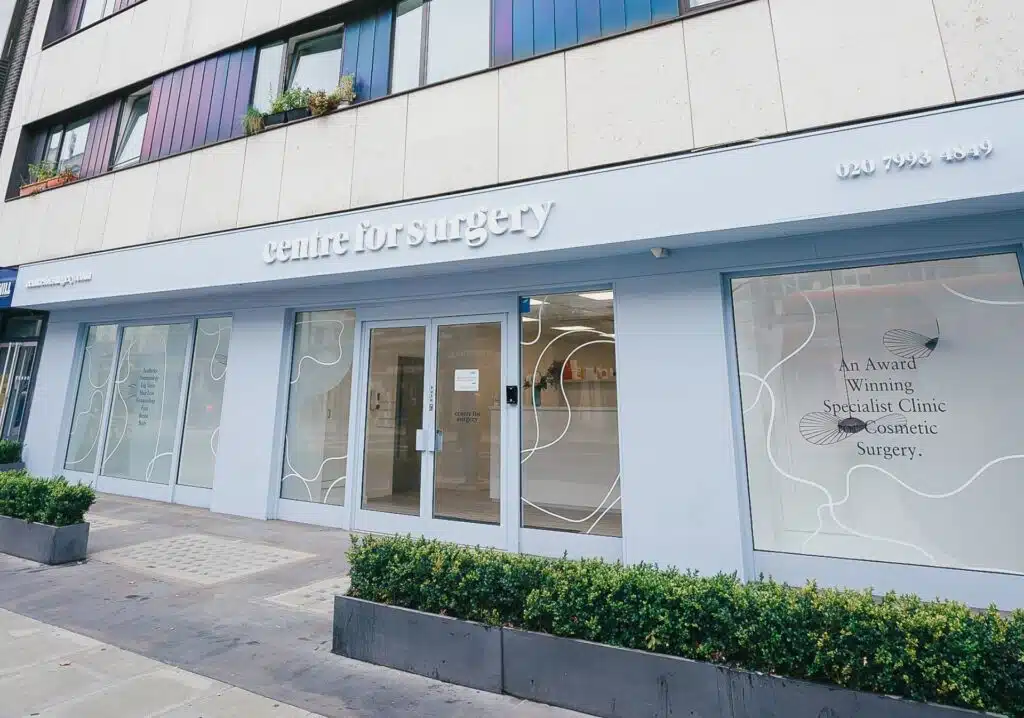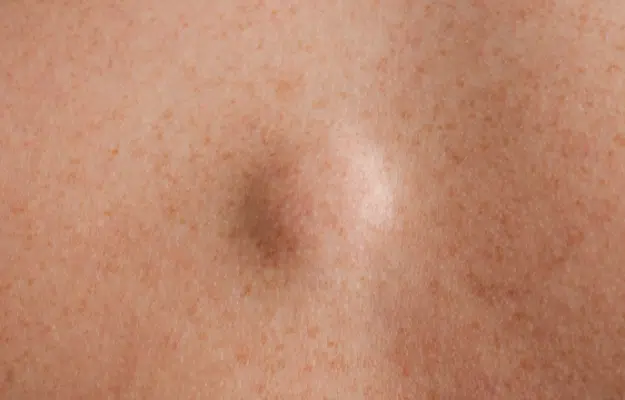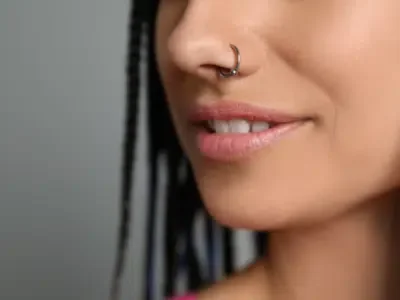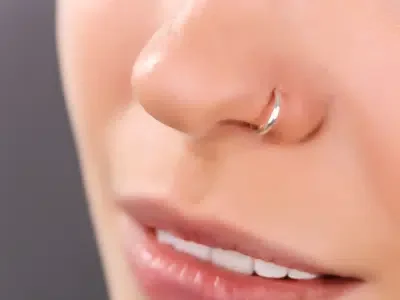Getting rid of a keloid from your nose piercing is mostly about calming down the swelling that causes them in the first place. By using steroid injections, you can gradually make the keloid smaller.
Keloids tend to pop up more in some people, especially if they experience some sort of knock or irritation to their nose piercing. This is because their skin reacts strongly to the trauma.
Before jumping into surgery as a solution, it’s a good idea to try out these injections first and keep going with them even afterwards. Not keen on surgery? No worries. There are other routes like specific laser treatments. And in really tough cases, some have turned to radiotherapy for keloids, though it’s super important to think carefully before going down this path, especially for areas like your face or neck.
RELATED: Scar Revision Surgery
Can keloids from nose piercings go away?
The question of whether keloids resulting from piercings can completely disappear is a nuanced one. For a lucky few, keloids may indeed fade away over time without much intervention. However, the reality for many individuals is that while keloids can significantly improve, this often requires a proactive approach involving treatments like steroid injections and possibly surgery.
RELATED: What Are The Different Types of Scars and How Are They Treated?
When it comes to keloids, they’re not just any scar; they’re a vigorous overgrowth of tissue that occurs where the skin has been wounded. Piercings, being intentional wounds, can unfortunately be a common site for keloids, especially in predisposed individuals. For those who are prone to keloid formation, the body’s natural healing process can go into overdrive, resulting in a raised scar that extends beyond the original injury site.
The use of steroid injections, such as corticosteroids, can be a game-changer in managing these stubborn scars. These treatments work by reducing inflammation and slowing down the excessive collagen production that keloids are known for. For some, this approach can lead to a noticeable reduction in size and relief from discomfort or itchiness associated with keloids.
Surgery presents another avenue for those looking for a more definitive solution, especially when keloids are resistant to other forms of treatment. However, it’s important to approach this option with caution. Given the nature of keloids to form as a response to skin trauma, surgery can sometimes trigger the formation of new keloids. That’s why it’s often recommended to continue with steroid injections, even after surgical removal, as a preventative measure to discourage recurrence.
Should you remove your piercing if you have a keloid?
Facing the dilemma of keloids can lead one to question the best course of action, especially regarding whether to keep or remove a piercing. If you’ve developed a keloid at the site of a piercing, the decision to remove the piercing is one that merits careful consideration, primarily due to the nature of keloids and how they interact with ongoing sources of irritation.
Keloids are essentially an overzealous healing response by the skin, leading to raised, often sizable, and sometimes tender scars. They extend beyond the original wound or trauma site, distinguishing them from more common types of scarring. Given that piercings inherently create a wound in the skin, they can, unfortunately, set the stage for keloid formation in individuals predisposed to this kind of scarring.
When a keloid has formed on a piercing, the ongoing presence of the jewellery can act as a continual irritant to the area. This irritation can provoke further inflammation, potentially exacerbating the keloid’s size and symptoms. Piercing jewellery may contribute to maintaining the existing keloid and encourage its growth, making the situation more challenging to manage.
Removing the piercing can be seen as a strategic move to eliminate a constant source of irritation, allowing the area to settle and potentially reducing the keloid’s prominence. This action might not guarantee the keloid’s disappearance but can be a critical step in managing its size and the discomfort it may cause.
It’s also worth noting that after removing the piercing, it would be wise to follow up with appropriate keloid treatment strategies. These can include options like steroid injections, silicone gel sheets, or pressure treatments, which have been shown to help in reducing the size and appearance of keloids.
Does keloid surgery hurt?
Many people naturally worry about the level of pain involved in keloid surgery. The good news is that the procedure itself is generally not considered to be highly painful, especially considering the targeted removal of scar tissue that characterises keloid treatment. The process is usually performed under local anaesthesia, which numbs the area around the keloid, significantly reducing any pain during the surgery itself.
The initial part of the procedure, which involves the injection of lidocaine (a common local anaesthetic), can cause a moment of discomfort. This is because the injection itself is a minor puncture to the skin, similar to any injection you might receive. However, once the anaesthetic takes effect, the area becomes numb, allowing the procedure to proceed with minimal discomfort.
After the surgery, as the anaesthesia wears off, it’s normal to experience some degree of discomfort. This post-surgical discomfort is part of the body’s natural healing process. The level of discomfort experienced after keloid surgery is generally reported to be low. Most patients find the post-operative pain to be manageable, especially with the aid of pain relief medications prescribed by their doctor.
Recovery experiences can vary from person to person, but our team will guide you on how to care for the surgical site and manage any discomfort. This might include recommendations for over-the-counter pain relievers, prescription medications, or simple home care measures such as applying ice packs or keeping the area elevated.
Book Your Consultation at Centre for Surgery
Ready to take the next step towards your aesthetic goals? Schedule your consultation with Centre for Surgery today. Our expert team in London is here to guide you through every step of your journey, ensuring a personalised and professional experience. Contact us now to begin your transformation.
